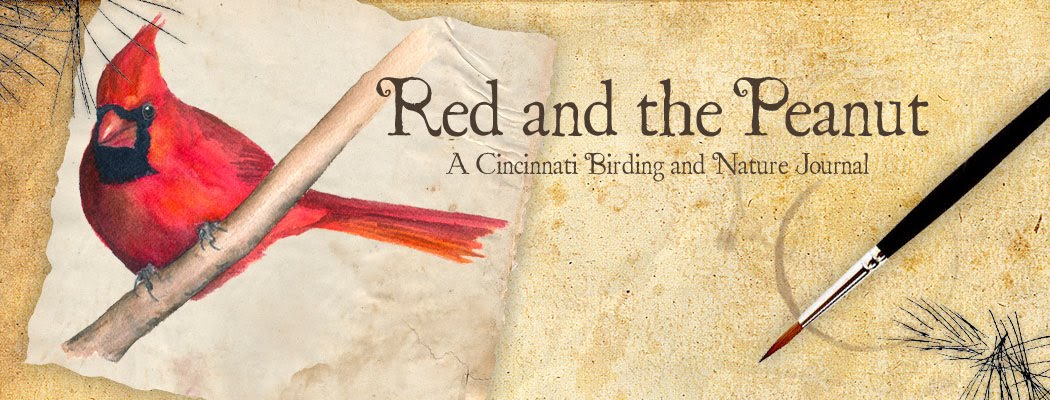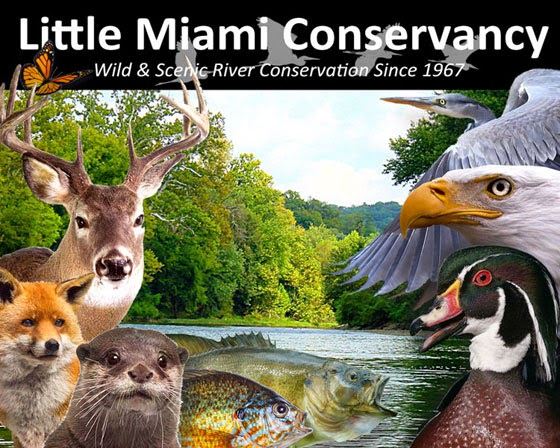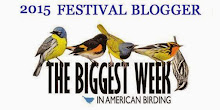Last weekend, Rick, Matty and I, my parents, and my brother, sister-in-law and niece headed southeast for an autumn adventure at
Greenbo Lake State Park in Kentucky. Every year we take a fall trip together to relax, hike and create memories. I think we've been to just about every state park with a lodge in Kentucky now. Next year the kids go off to college (
sniff), but we made a pact to keep our autumn adventures going. Wherever the kids end up, we are going to take one weekend every fall and go somewhere together. This year was another perfect trip. The weather was wonderful, the hiking fun, and lots of memories were added to the memory vault...
 |
| The kids canoeing on Greenbo Lake in Kentucky. The temps were crisp and the leaves were already showing gorgeous autumn color. Being in the woods with my family is my favorite thing! (Sprinkle in a few birds, and it's icing on the cake. A female Belted Kingfisher flew right in front of us and across the lake just minutes after I took this photo.) |
 |
| (Rick's the perfect canoeing partner. He always picks up the slack when I pick up the camera instead of the paddle!) Hi Rick! |
 |
| Greenbo Lake is amazingly clear! You can see fish at deep depths, and you can see all the way to the bottom at least 15-20 feet from the edge. Rick and I spent a lot of time just paddling around the edges looking at fish and seeing what was on the bottom. We even saw two Stinkpot turtles (Sternotherus Odoratus) swimming and walking around... |
 |
| This little Stinkpot Turtle looks like she's in shallow water, but she's in water at least 8 feet deep. This photo shows just how clear Greenbo Lake is. I'm assuming this is a female stinkpot because of the short tail; males have longer tails. She was about 5-6 inches long and was covered in algae. |
Stinkpot Turtles are new for me. I'd never seen one in the wild. Stinkpots don't do a lot of basking in the sun on logs, so you usually only see them when they are moving around in the water, and water usually isn't this clear, so we were lucky to see them. The stinkpot's head is very large and triangular-shaped with an upward pointed snout that sort of resembles a snapping turtle, but it's clearly not a snapper because two noticeable yellow stripes run from the snout to the neck. The carapace is different too because it's smooth instead of spiky like a snapping turtle's. The yellow stripes on the head reminded me a bit of map turtles also, but the carapaces were too different. I was puzzled, so I sent the photos to turtle expert, Paul Krusling, who knew immediately what they were...stinkpots!
 |
| Stinkpot turtles aren't fast swimmers. Their short little legs produce a swimming stride that could almost be described as "lumbering," but they do move along, and I was soon pleading, "don't swim away so fast, turtle. I can't ID you yet!!" |
When we got home, I pulled out "Amphibians and Reptiles of Indiana," by Sherman Minton, and started reading about stinkpots, also called Common Musk turtles. Soon all the field marks started making sense. These turtles really are distinctive once you study them. A few more descriptive field marks made the ID obvious...an elongated carapace that is smooth and domed, webbing on the feet that goes all the way to the toenails, and weak swimming. They like slow-moving water with muddy bottoms, which definitely fits Greenbo. I also read Stinkpot turtles are nocturnal, so we were doubly lucky to spot them moving around on the lake's bottom in the afternoon! As the name implies, Stinkpots (or Common Musk) turtles get their nickname from their ability to secrete a stinky smelling defensive oil through their carapace when they are under duress.
 |
| Tall pines border a good part of the lake, and when you canoe close to the shore, that fragrant pine scent sweeps over you and causes you to linger. |
 |
| My parents, Joni and Jerry, taking a leisurely pontoon boat ride with Bill and Gail. |
A very short iPhone video of our autumn afternoon out on Greenbo Lake.
...another short iPhone video of canoeing on Greenbo Lake in Kentucky...this time, a short race.
If you live in Cincinnati or Mason,
Greenbo Lake State Park is only about 2 hours and 45 minutes away and is a very easy drive. We enjoyed hiking on the deserted trails and basically had the lake to ourselves. We had a lot of fun, and the food in the lodge was good too (especially the cherry pie!).
















































